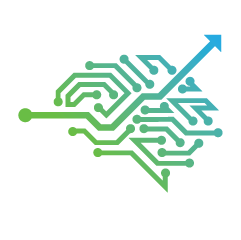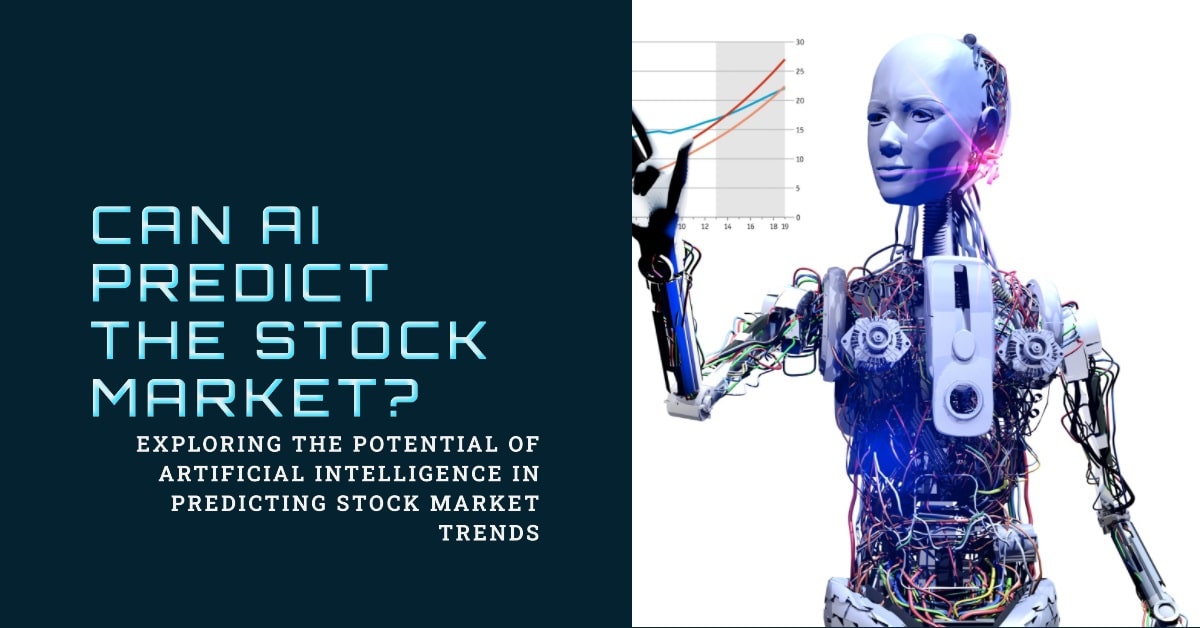Introduction
The stock market has always been a dynamic landscape, driven by a myriad of factors ranging from geopolitical events to company earnings. Historically, traders and investors have sought to decode this intricate system using a combination of intuition, experience, and data analysis. As we find ourselves in an age dominated by technological advances, new tools and methodologies, particularly machine learning and advanced algorithms, are reshaping the way we approach stock market predictions.
Traditional stock market prediction techniques, while valuable, often encounter challenges when it comes to processing vast amounts of data in real-time or identifying intricate patterns that might go unnoticed by the human eye. Enter the realm of computational finance. Machine learning, a subset of broader technologies under the umbrella of computational intelligence, harnesses the power of data to train algorithms, enabling them to make predictions or decisions without explicit programming for such tasks.
With the influx of diverse data – from company financials to social media sentiment – the need for systems that can quickly analyze and derive actionable insights is paramount. Technologies like neural networks, natural language processing, and deep learning models have shown considerable promise in extracting valuable information from this data deluge.
Moreover, institutions and individual investors alike are recognizing the advantages that machine learning-driven tools, such as those provided by FinBrain Technologies, bring to the table. In this age of information, being equipped with predictive models and datasets that can adapt and evolve can be the key to maximizing investment returns.
This article aims to explore the capabilities and advantages of machine learning in stock market forecasting, illustrating its edge over traditional methods and highlighting its potential to revolutionize investment strategies.
AI’s Advantages Over Traditional Investing Methods
The stock market, with its myriad of factors influencing prices, has always been a complex puzzle for investors. Historically, traders and investors relied on fundamental and technical analysis to make their investment decisions. While these traditional methods have stood the test of time and offer valuable insights, the advent of Artificial Intelligence in the investment sphere is changing the game. Let’s delve into how AI provides an edge over conventional investment methodologies.
1. Speed and Efficiency
- Traditional Approach: Fundamental and technical analyses often involve manually sifting through vast amounts of data, which can be time-consuming.
- New Approach: AI algorithms can process vast datasets at unprecedented speeds, offering insights in a fraction of the time it would take a human.
2. Handling Massive Datasets
- Traditional Approach: While human analysts can handle a limited amount of data, the exponential growth of data in today’s digital age can be overwhelming.
- New Approach: Machine Learning thrives on data. The more data it processes, the better it gets at recognizing patterns and trends. This allows algorithms to integrate diverse data sources – from historical stock prices to social media sentiment – to generate comprehensive analyses.
3. Real-time Analysis
- Traditional Approach: Technical analysts might rely on periodic chart patterns, while fundamental analysts could wait for quarterly financial statements.
- New Approach: Algorithms can analyze data in real-time, adapting to new information immediately and adjusting predictions accordingly. This is especially crucial in today’s fast-paced markets where conditions can change rapidly.
4. Objectivity and Bias Reduction
- Traditional Approach: Human analysis, no matter how expert, can be influenced by biases, emotions, or external pressures.
- New Approach: Machine Learning algorithms operate on pure data, eliminating emotional decision-making and reducing inherent biases. This leads to more objective and consistent analyses.
5. Advanced Pattern Recognition
- Traditional Approach: Technical analysis is rooted in pattern recognition, but human analysts might miss subtle or complex patterns.
- New Approach: Using neural networks and deep learning, AI can detect intricate patterns and relationships in the data that might be invisible or counterintuitive to human analysts.
6. Predictive Capabilities
- Traditional Approach: While fundamental and technical methods can provide projections, they often rely on historical trends and might not always account for unforeseen events or shifts.
- New Approach: By analyzing a multitude of factors simultaneously and learning from real-time data, AI can provide more accurate predictive models that continually refine themselves.
7. Integration of Alternative Data
- Traditional Approach: Traditional methods might not always factor in alternative data sources, like news sentiment or geopolitical events, into their analyses.
- New Approach: Artificial Intelligence can incorporate and weigh a vast array of data sources, from traditional financial metrics to non-traditional datasets, offering a holistic analysis.
8. Continuous Learning and Evolution
- Traditional Approach: While human analysts continue learning, the pace might not match the rapidly evolving markets.
- New Approach: Machine learning algorithms are designed to learn continuously. As they process more data, they refine their strategies, making them more adaptable to changing market conditions.
AI Stock Forecasting Algorithms
The integration of Artificial Intelligence into the realm of stock market predictions represents one of the most transformative applications of technology in modern finance. AI stock forecasting algorithms combine computational power with intricate pattern-recognition capabilities to provide more accurate and actionable insights into stock market movements. Let’s delve into the intricacies of these algorithms and understand what sets them apart.
The Foundation: Data Collection
The foundation of any AI algorithm lies in data. Stock forecasting algorithms begin by amassing large datasets that encompass a multitude of factors. This includes historical stock prices, trading volumes, financial statements, macroeconomic indicators, and more. In some sophisticated models, even non-traditional data sources like news sentiment, social media trends, and geopolitical events are ingested and analyzed.
Machine Learning and Deep Learning
While AI provides the overarching framework, machine learning and deep learning are the main actors behind stock forecasting algorithms.
- Machine Learning (ML): ML algorithms rely on statistical techniques to learn from data. By processing historical data, these algorithms discern patterns and make predictions. For stocks, this might mean identifying how certain stocks behave before major bullish or bearish trends.
- Deep Learning: A subset of ML, deep learning uses neural networks that mimic the human brain’s structure. These networks can process vast amounts of data, recognize intricate patterns, and make predictions with higher accuracy. They are especially proficient in handling vast datasets and have been pivotal in enhancing stock prediction accuracy.
Sentiment Analysis
In the stock market, sentiment can drive price as much as fundamentals. AI algorithms, equipped with Natural Language Processing (NLP), analyze news articles, financial reports, and even social media chatter to gauge the sentiment around a particular stock or the market as a whole. This sentiment score can then be factored into predictions, providing a more holistic forecast.
Reinforcement Learning
Another promising technique employed in stock forecasting is reinforcement learning. Here, the algorithm makes predictions and learns from its mistakes in real-time. Over time, by learning from its actions and the resulting rewards (or penalties), the algorithm refines its prediction strategies.
Overcoming Challenges
However, AI forecasting is not without challenges:
- Noise in Data: Financial markets contain a lot of “noise” or irrelevant information. Distinguishing meaningful data from noise is crucial for accurate predictions.
- Overfitting: AI models can sometimes become too tailored to historical data, making them less effective with new data.
- Black Swan Events: Unexpected, rare events can significantly impact stock prices. Predicting such events remains a challenge.
- Ethical Considerations: The use of AI in stock trading brings forth ethical dilemmas, especially when algorithms have the potential to manipulate market sentiments or prices.
The Future of AI Stock Forecasting
As technology evolves, stock forecasting algorithms are only set to become more sophisticated. Integration of more diverse data sources, real-time learning capabilities, and improved pattern recognition will further enhance their accuracy. The future will likely see a symbiotic relationship between human investors and Machine Learning tools, leveraging the strengths of both to navigate the ever-complex world of stock markets.
Incorporating Alternative Financial Data
While traditional financial metrics are crucial, the integration of alternative financial data can enhance the performance of the stock predictions. Here’s how FinBrain Technologies utilizes such data:
News & Sentiment Analysis Data
Financial news can sway the market significantly. Using NLP algorithms, FinBrain evaluates sentiment data based on news collected from 20+ major financial sources. This helps in understanding the overall market sentiment and potential price movements.
US House & Senate Trades
FinBrain’s insight into the trades made by US Representatives and Senators can provide a significant advantage. Given that US congress members may possess information before the markets, monitoring their trades can yield insights into potential bullish or bearish moves.
Company Insider Transactions
Insider trading data, such as trades taken by company insiders, transaction types, and dollar amounts, can be a strong indicator of a company’s future performance.
Options Put-Call Ratios
The volume of traded put-call option contracts provides a signal of market sentiment. By analyzing these ratios, one can decipher potential bullish or bearish market trends.
Mobile App Scores
In today’s digital age, a company’s mobile app performance can be a precursor to its financial performance. FinBrain offers insights into mobile app scores, which can be a leading indicator of a company’s trajectory.
FinBrain: Your Partner in Stock Predictions
FinBrain Technologies understands the nuances of the stock market. By combining traditional financial data with alternative datasets, they offer a holistic view of the market landscape. Services provided on FinBrain Terminal and through FinBrain API include:
- AI-generated future price predictions
- Daily technical outlook reports, detailing company technical status, top holders, and sentiment scores.
- News and sentiment analysis data, offering a pulse on market sentiment.
- Insightful data on US House & Senate trades, company insider transactions, options put-call ratios, and mobile app scores.
In conclusion, while no tool or model can predict stock prices with absolute certainty, Artificial Intelligence has brought a paradigm shift in stock market predictions. With companies like FinBrain Technologies, individual investors now have a formidable ally in navigating the complex world of stocks.
FinBrain Technologies
99 Wall St. #2023
New York, NY 10005


Leave a Reply